
RV skirts are a must during cold weather camping. RV skirts help protect your RV from rodents and other critters, and they help preserve indoor heat better. RV skirts are commonly installed on stationary RVs or for long-term stays in a resort or campground.
For people parking their RV in a long-term location, an RV skirt provides visual appeal and protection from the elements. It serves as a barrier to entry by tiny creatures. An RV skirt also helps preserve heat from escaping for people on shorter cold-weather camping trips.
Read on to discover more about RV skirts, what they do, and why they’re worth having.
What Is RV Skirting?
RV Skirting is a solid barrier surrounding the RV, extending from the bottom of the exterior walls to the ground.
RV skirting can be made from many different types of material and can be purchased or DIY. Some common types of RV skirting include:
- Wood
- Styrofoam
- Vinyl
- Inflatable
Protecting an RV’s undercarriage provides several benefits.
Related: Are RV Covers Waterproof?
Blocks Wind
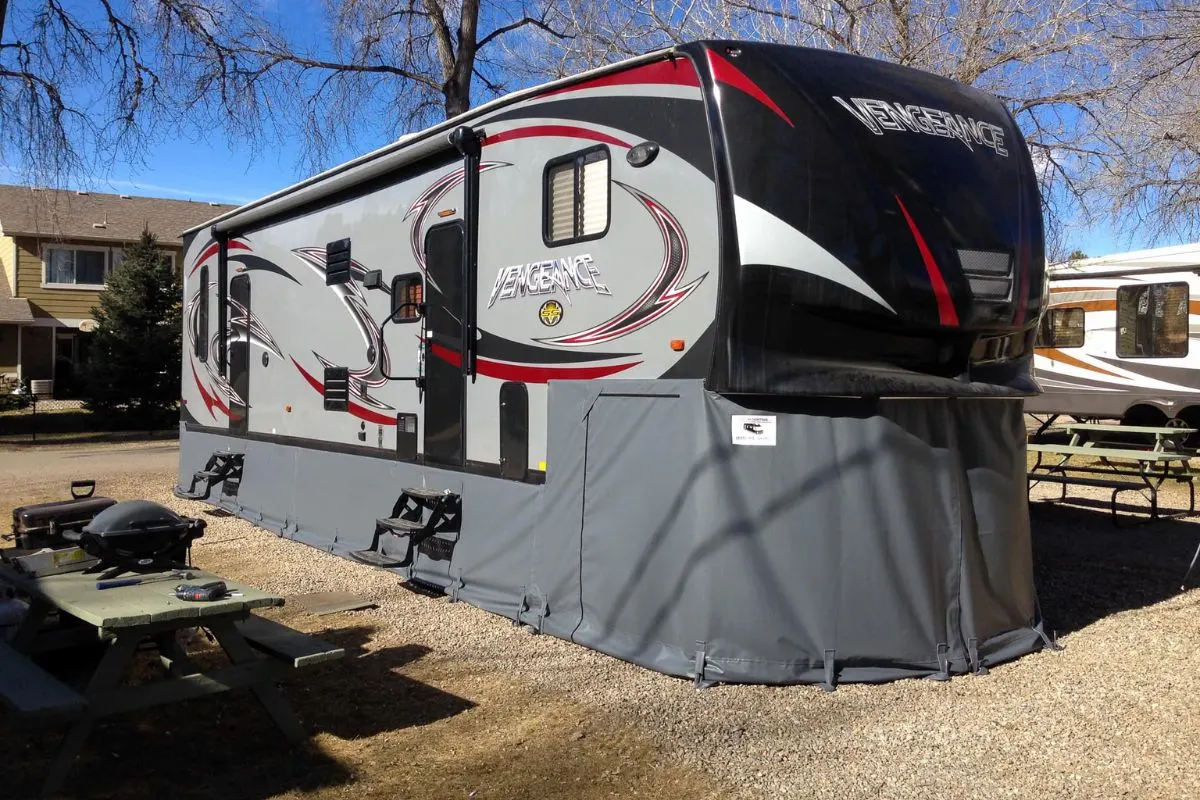
An RV skirt blocks wind from circulating beneath the RV and whisking away interior heat. In winter, frigid winds can cause pipes and holding tanks to freeze. Freezing can lead to cracked or bursting pipes and costly repairs to a damaged water system and flooring or walls.
Prevents Energy Loss
RV skirts prevent energy loss, particularly those with a high insulation factor. As heat leaves the RV through the floor, the skirt keeps warmth behind the skirt and beneath the floor.
Retaining heat means you’ll spend less on propane or electricity. An RV skirt also helps keep the interior floor warmer and improves overall comfort.
Types of RV Skirting
Each type of RV skirting has its benefits and detracting factors.
DIY Styrofoam or Wood Reinforced Skirts
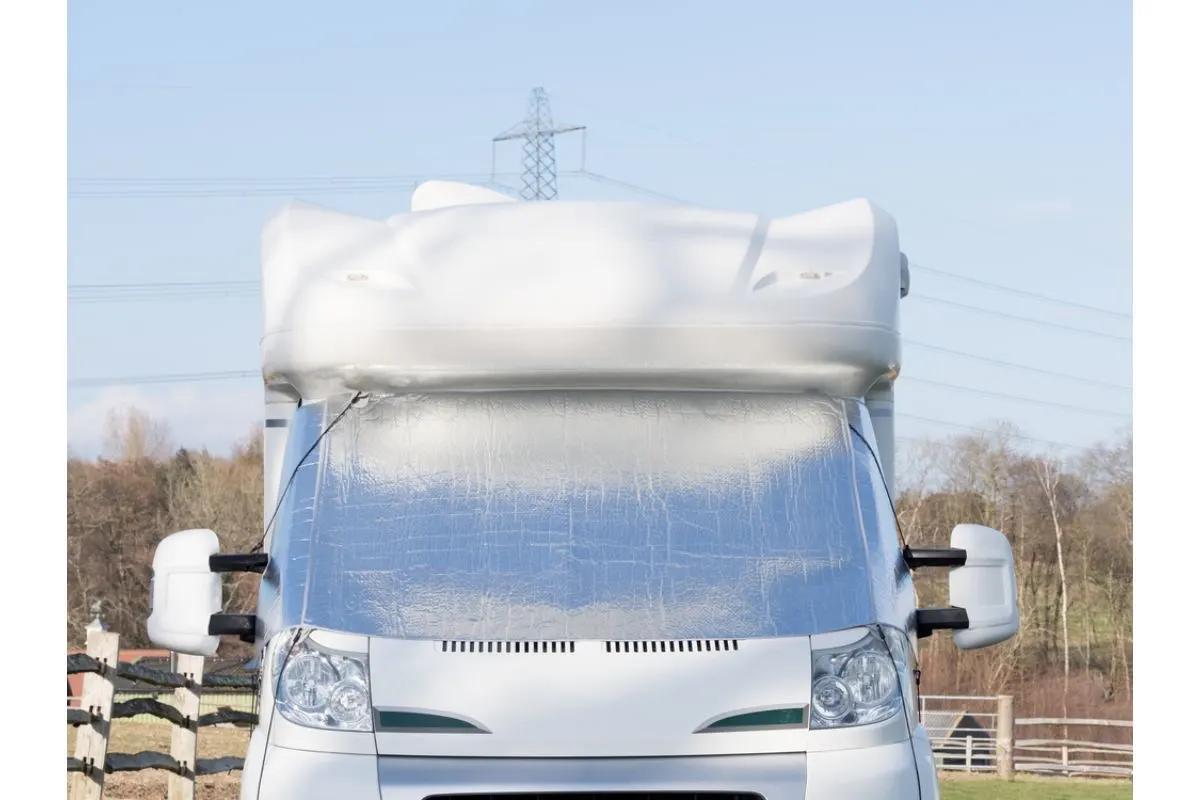
Building your RV skirt is one of the least expensive RV skirt options. Styrofoam, wood, or wood products like plywood or wood siding commonly used in home construction can help protect your RV and add visual appeal.
A properly sized and positioned DIY Rv skirt can create a reasonably effective barrier against the elements. The skirt can also help prevent small animals from entering your undercarriage wiring or your RV.
Cost
A Styrofoam skirt costs about $200-$300 in materials to make. More permanent wooden skirts backed by insulation can cost around $800 for materials.
Durability
A Styrofoam skirt should be considered semi-permanent and disposable. Styrofoam can take a beating from the elements in harsh climates and may need to be replaced more frequently than other types of RV skirting.
Wooden skirts are more durable and weather-resistant than Styrofoam, especially when backed with foam insulation.
The heavy, bulky material can be challenging to transport for both types of skirting, so these skirts are ideal for stationary RVs. They are generally thrown away when they wear out, or the RV is moved to another location.
Performance
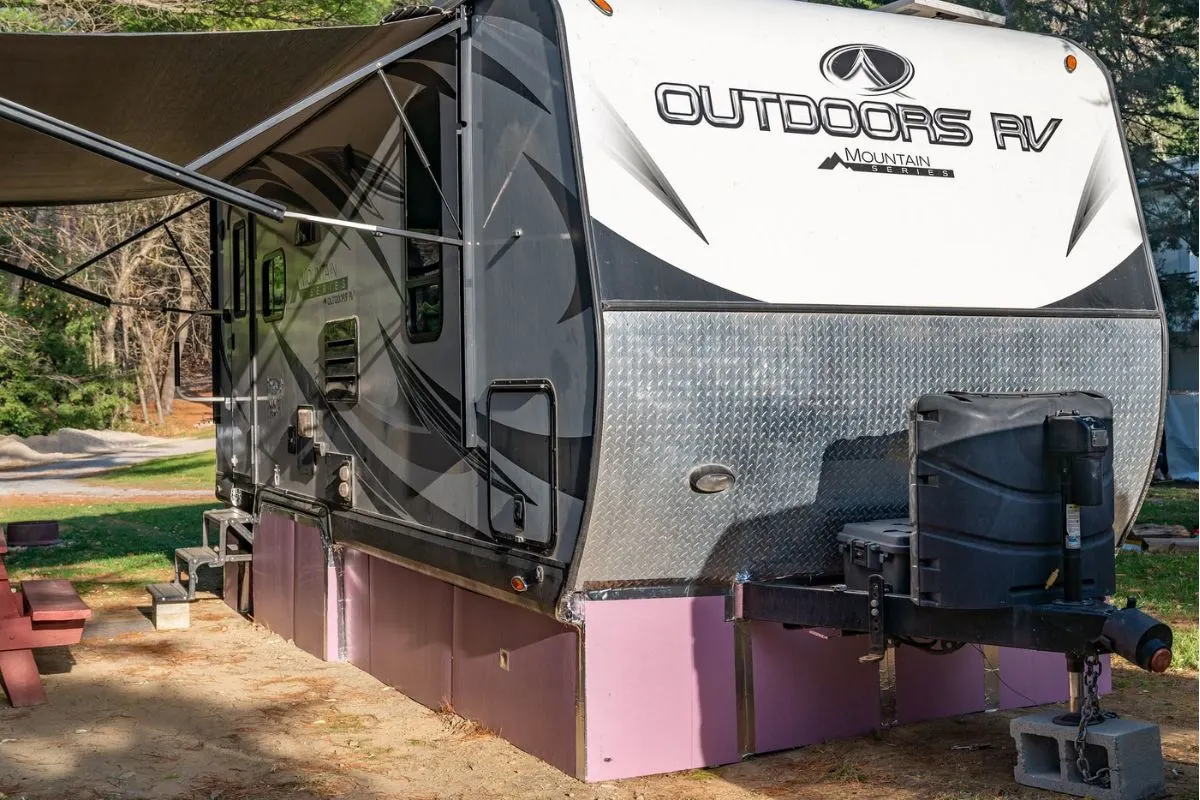
Styrofoam skirts offer decent insulation since the material used is the same as the foam insulation used in home construction.
When the Styrofoam is covered with a wooden barrier or frame, the insulating properties are enhanced, and the border between the RV and elements or animals improves.
Resistance to the Elements
A Styrofoam RV skirt’s ability to resist the elements varies based on quality. In general, Styrofoam skirts alone are susceptible to high winds and heavy rain or snow damage. A wooden skirt in front of the Styrofoam provides more protection against natural forces and bad weather.
Appearance
Most Styrofoam RV skirts are more practical than attractive. With some paint and nice trim, a Styrofoam skirt can look decent.
Still, on average, they can detract from the appearance of an otherwise beautiful RV. Many campgrounds do not allow the use of Styrofoam skirts because they are often considered an eyesore.
On the other hand, a wooden skirt looks quite attractive with some attention to detail and a good fit. Painting or staining the wood, plywood, or wood panels in a color that matches your RV can enhance the appearance of your rig. Choosing a nice-looking wood paneling rather than rough plywood can add visual appeal and protection from the elements.
Vinyl Skirts
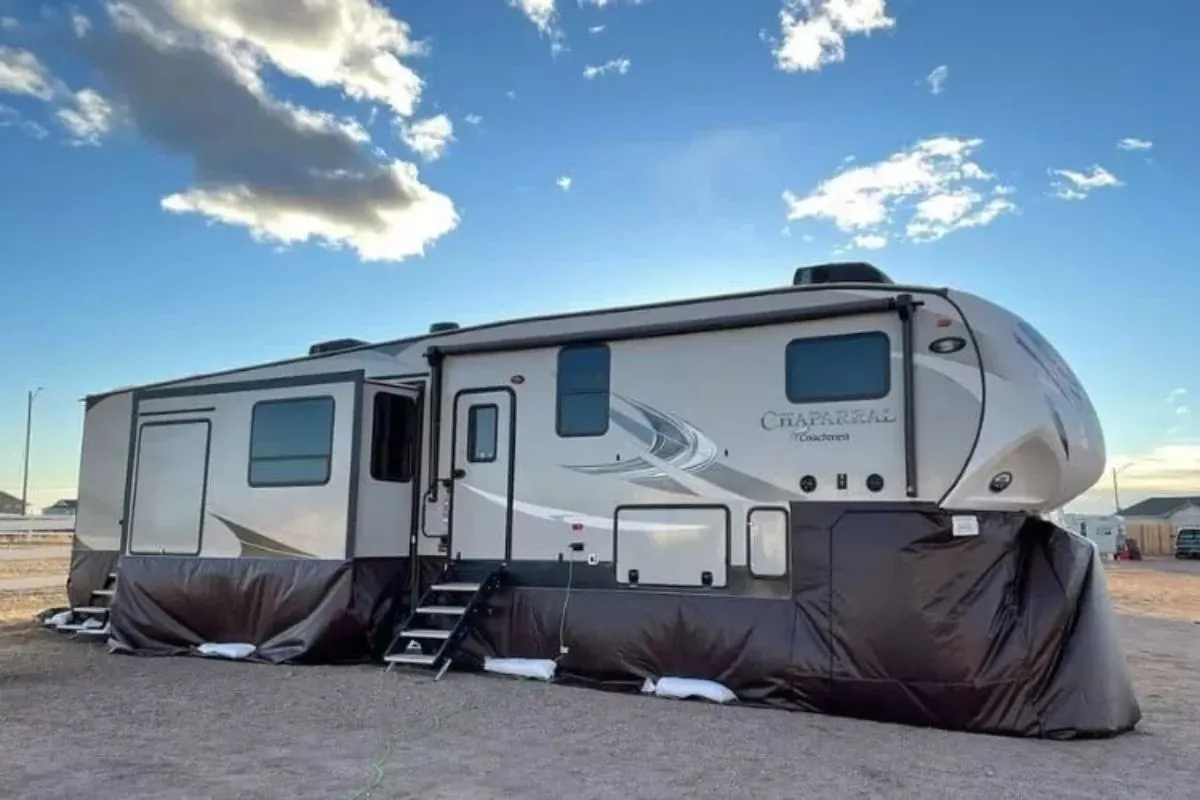
Vinyl skirts may be the most popular type of RV skirt. Consumers can buy these types of skirts ready-made or custom ordered to fit. RV owners can install a vinyl skirt themselves or opt for professional installation.
A vinyl skirt attaches to the RV with metal snaps drilled into the RV chassis.
Many RV owners choose professional installation. Local shops often offer custom installation of vinyl skirts. The installer will come to your RV site, measure your RV, return with the custom-cut materials and install the snaps on your RV. You can then snap the RV skirt on and off as needed.
Some companies offer a DIY installation option for vinyl skirts. The DIY approach requires RV owners to measure, cut, drill the snap holes, and perform all other installation steps. The DIY approach requires more work and patience, but it costs less than professional installation.
Some companies offer glue-on 3M snaps that stick to the RV walls without drilling. Be aware that glue-on snaps are prone to falling or ripping off and may require more repair or re-application. Opt for snaps that are drilled in rather than glued on for the best results.
Cost
Custom professional installation can cost $1,500 to $3,500, depending on the RV model and installation company.
DIY installation starts around $700 and can cost up to $1500 depending on the quality of the vinyl skirt and the size of your RV.
Durability
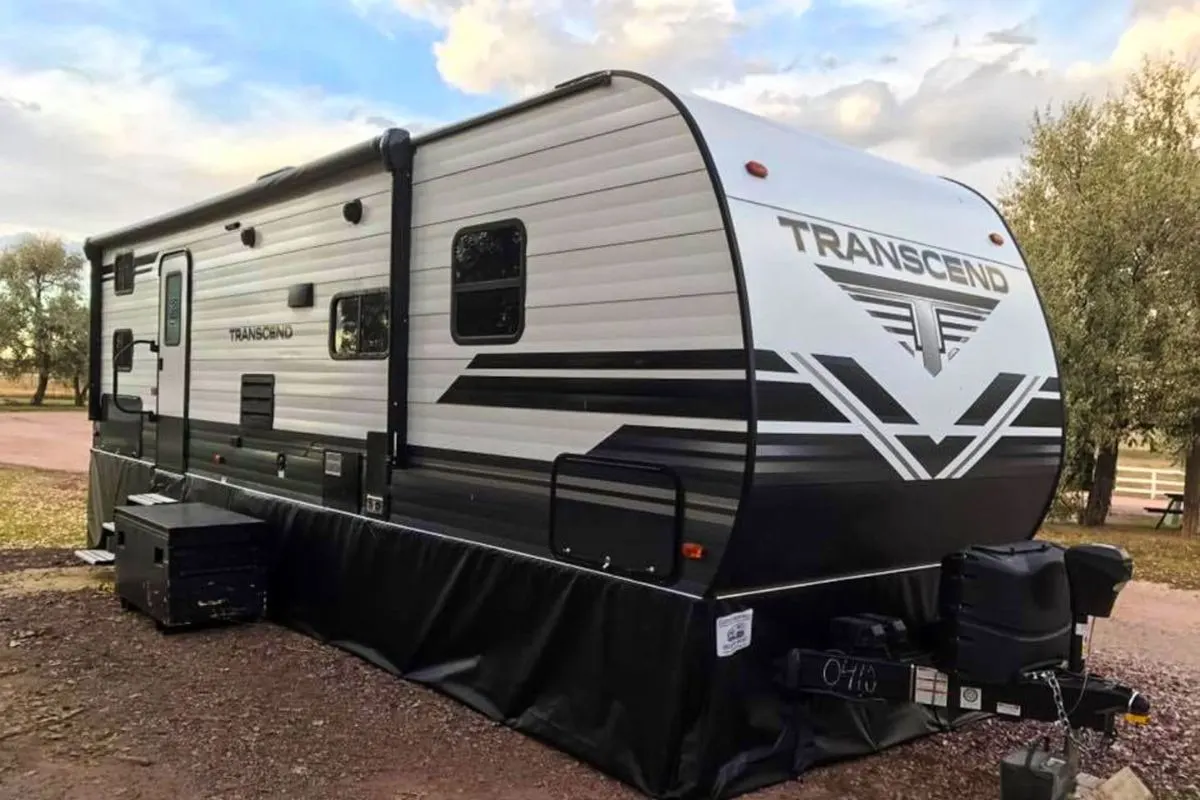
A vinyl skirt is permanent and can last the life of the RV when properly used. Unlike wooden and Styrofoam skirts, the vinyl skirt is easily removed and stored for travel or in storage and reattached on demand.
Performance
Vinyl skirts provide the least protection from the weather, energy loss, and animal invasion of all the RV skirts discussed here. Although they can block wind, they have a low insulation factor and are less sturdy than the other types of RV skirts.
Resistance to the elements
These skirts can unsnap during high winds or when heavy snow piles up against them. Vinyl skirts must be staked or weighted to adhere them to the ground. While staking down the skirt is better, weights will have to do if the RV is on a concrete slab.
Appearance
Correctly fitted, installed, and maintained vinyl skirts usually provide curb appeal. Most campgrounds and RV resorts allow vinyl RV skirts as long as they are kept in good repair.
Inflatable RV Skirt
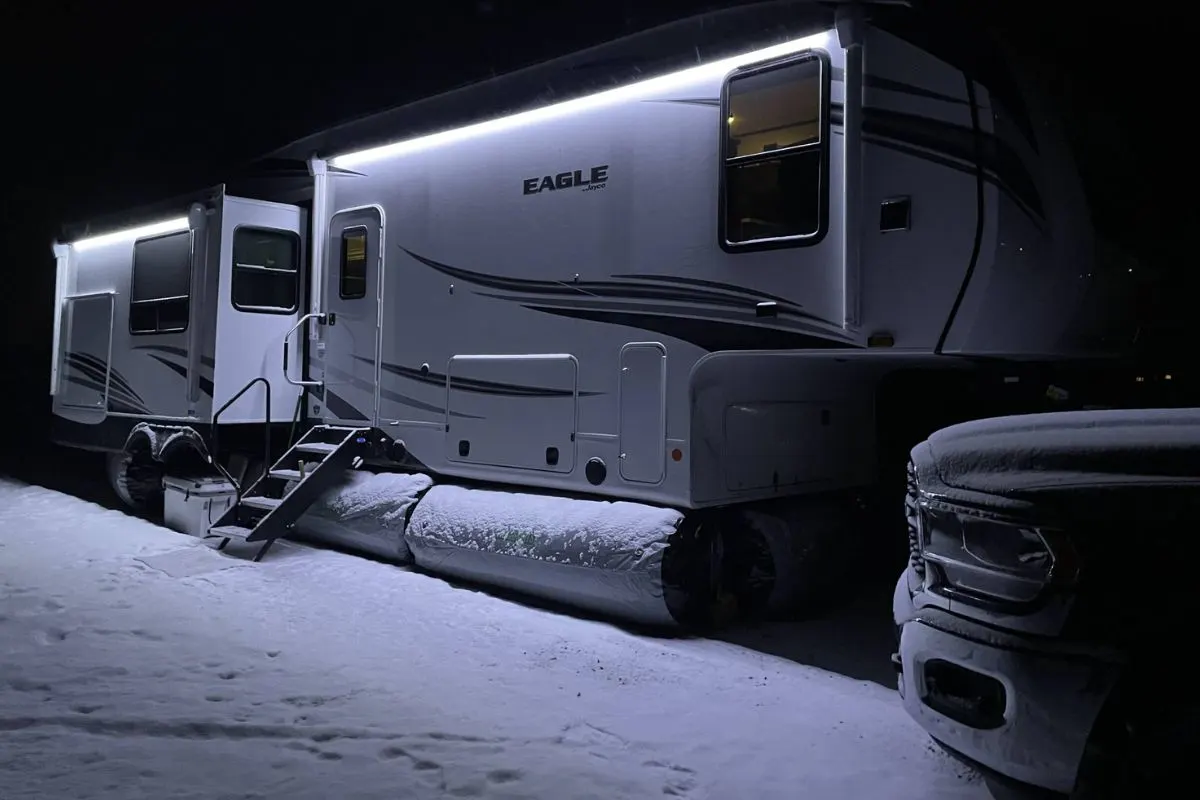
Unlike the other types of RV skirts, inflatable skirts require no installation. Simply inflate the skirt beneath the stationary RV.
Inflatable skirts come in kits based on RV length and ground clearance. The inflatable skirt consists of a series of inflatable tubes that form a barrier around the bottom of the RV. Blow up the system with an electric air pump to set it in place. When it’s time to move, use the air pump to deflate the skirt.
Cost
An inflatable skirt at AirSkirts starts at $1699 for a 13’ – 16’ RV and goes up to $3199 for a 45’ rig. This cost is comparable to the price of a professionally installed vinyl skirt.
Durability
AirSkirts claims its inflatable RV skirt is so rugged it may outlive your RV. The inflatable system suits RVers who frequently move around and for extended stays or permanent situations.
Performance
Because air is an excellent insulator, and the inflatable tubes offer 22” to 34” of air barrier, AirSkirts offers excellent insulation. The heavy-duty PVC construction provides added protection.
Resistance to the Elements
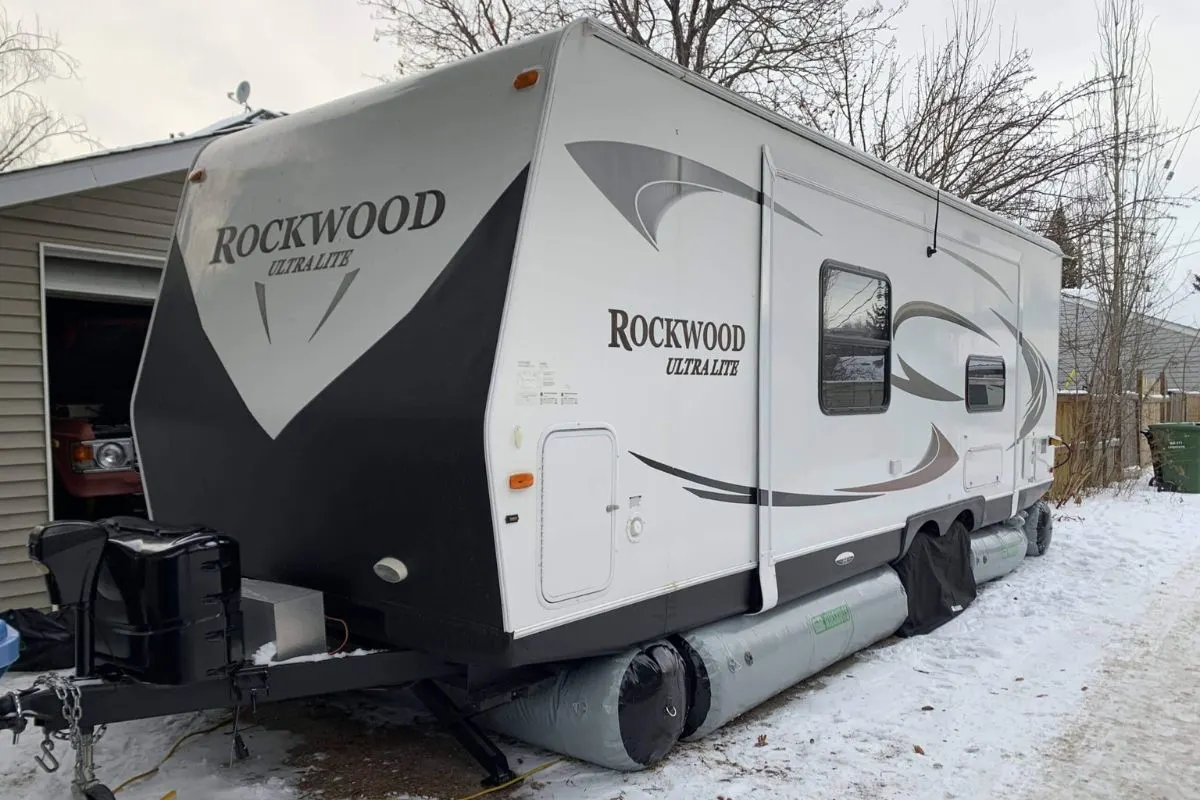
Inflatable RV skirts are super sturdy. They are wind-resistant, water-resistant, and won’t cave in with dense, heavy snow piles.
Appearance
Inflatable skirts have a unique appearance and can attract the attention of other campers. Their high quality and durability mean most campgrounds and RV resorts welcome inflatable RV skirts.
